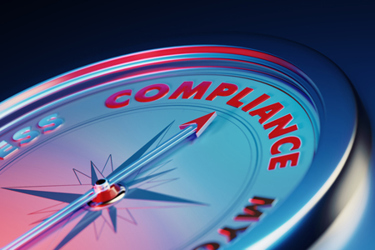Navigating EU MDR Compliance: Overcoming Challenges To Sustain Your Certification
By Hilde Viroux and Maggie Chan (PA Consulting) and Dona O’Neil (Northeastern University)

Since the introduction of the EU MDR in 2017, the medical device industry has learned just how challenging obtaining initial MDR certification truly is. According to a survey of notified bodies, the number of certificates issued as of June 2023 covers roughly one-third of the applications submitted. Taking into account that it can take months to have an application approved, and then six months to two years before the certificates are issued, it is no surprise that there is a lot of fatigue with EU MDR in general. The requirements keep being updated, timelines extended, and the EU database for medical devices, EUDAMED, is still not up and running. Notified bodies are also struggling to keep up with the demand for reviews of MDR certificates, consequently impacting the ability to accurately predict certificate approval timeline and budget.
Sustaining Certification Is An Ongoing Task, Not A One-Time Finish Line
There is the misperception that obtaining the MDR certification is an end point, and budget and resources can be redirected. However, EU MDR creates a "new normal" for medical devices manufacturers. The continuous evolution of regulatory standards and frequent guidance updates creates a dynamic landscape, demanding ongoing diligence to comprehend and adhere to changing requirements. Sustaining compliance involves addressing various challenges, including establishing a streamlined process for updating all regulatory documentation, reallocating resources with specialized training for optimal risk management, aligning documentation with the latest regulatory demands, developing systems to ensure effective communication and transparency across the organization, and formulating a strategic plan that aligns with global regulations to minimize the cost of maintaining compliance across various geographical regions.
Due to the additional requirements of EU MDR, especially in the post-market phase, the cost of business year over year to maintain compliance for product in the market has increased significantly and the impact may not be well understood at the senior management level. As we go into 2024 with significant headwinds impacting the medical device industry and continuing with a soft economy, resources for EU MDR compliance are even more stringent, forcing companies to reevaluate the value proposition of their products and their long-term desire to maintain CE marks in the EU market. Moreover, manufacturers need to balance delivering innovative technology while ensuring existing products maintain the highest standards of safety and quality.
Already while working toward EU MDR compliance, manufacturers of medical devices should be thinking how to set up the organization in the post-certification phase in an efficient way. You need to think about how to establish robust processes that can adapt to evolving regulatory requirements, as well as to ensure procedures, trained resources, and systems are in place to efficiently incorporate updates/modification from the latest regulations.
Documentation
EU MDR and supporting guidance give strict timelines for the updates of the various documents such as the Clinical Evaluation Report (CER), the Periodic Safety Update Report (PSUR), and the Risk Management Report (RMR), all supporting the life cycle activities for medical devices. Apart from the update frequency defined in the regulation or guidance, there are external factors that may trigger an unscheduled update, such as a Field Safety Corrective Action (FSCA). Under MDD, these reports didn’t exist, or no update frequency was defined.
The RMR, CER, and PSUR are part of the technical documentation, which in turn has to be kept “continuously” up to date, putting even more pressure on the various functions to ensure the updates are aligned to avoid discrepancies in the technical documentation.
The responsibilities for dealing with the device life cycle activities per EU MDR are typically distributed over various functions who don’t operate under the same timelines or priorities. For example, the clinical teams may be dealing both with life cycle management activities such as post-market clinical follow-up and with clinical data collection for products in the pipeline, supporting innovation. Quality or medical safety may be dealing with complaints and incident reporting while they also have to generate the PSUR.
Budget
Maintaining compliance after EU MDR certification will require companies to allocate budget. The size of the budget will depend on how well the organization is prepared. If your company has looked into effective governance for management, optimized the documentation governance process, and established a centralized system to ensure communication and transparency among different stakeholders, the process may be smoother, with less resources required. Companies also can consider outsourcing some life cycle management activities. The risk with outsourcing is that some of the “know how” may be lost to the company and that critical information gained from the post-market surveillance activities is not circled back in an efficient way to the proper groups in the organization.
Additional budget for the life cycle maintenance activities will impact the cost of goods, which, in turn, impacts pricing of the devices in the market. Minimizing these costs by implementing the most efficient solution for the company may lead to a competitive advantage in the market.
Other Regulatory Bodies Soon To Follow Suit
Many other regions follow the EU when it comes to regulating medical devices. They are coming with similar requirements in both the pre- and post-market phases, specifically surrounding QMS, clinical evidence, and post-market surveillance requirements. The continuous evolution of regulatory standards and frequent guidance updates create a dynamic landscape demanding ongoing diligence to comprehend and adhere to the changing requirements. Ensuring the device documentation meets the appropriate standards will facilitate and speed up access to market in other regions than the EU. It also creates an opportunity to gain efficiencies when requirements are aligned, as it reduces rework and rewriting of submission documentation and labelling changes.
Conclusion
A common perception is that once certification is achieved, the workload for sustaining it decreases for reasons such as the strategy has been set, less literature will need to be reviewed, and fewer PMS data sets will need to be analyzed during the update frequency. While this may be true in theory, the effort will only decrease with a streamlined process that supports strong interdependency between risk, quality, regulatory, and clinical affairs.
Sustaining compliance involves tackling diverse challenges, including establishing a streamlined approach for updating clinical and post-market documentation, reallocating resources with specialized training for consistent risk management, aligning documentation with the latest regulatory demands, and formulating a strategic plan that aligns with global regulations to minimize the cost of maintaining compliance across various geographical regions. Moreover, given the significant headwinds that the medical device industry is facing, manufacturers will have to balance delivering innovative technology while ensuring existing products maintain the appropriate standards of safety and quality put forth by international regulations.
As we progress into 2024 and swiftly approach the initial MDR implementation date of May 2024, manufacturers should be shifting their focus to how their remediation efforts can be applied to sustaining compliance: What are essential functions and where is there room to trim?
About the Authors:
 Hilde Viroux is a medtech expert at PA Consulting and is an expert on the European Medical Devices Regulation. She has broad experience in regulations, quality, manufacturing, supply chain, and project management in the pharmaceutical and medical device industry. She has an MSc in medical technology regulatory affairs from Cranfield University in the U.K. and a BS in biochemistry engineering.
Hilde Viroux is a medtech expert at PA Consulting and is an expert on the European Medical Devices Regulation. She has broad experience in regulations, quality, manufacturing, supply chain, and project management in the pharmaceutical and medical device industry. She has an MSc in medical technology regulatory affairs from Cranfield University in the U.K. and a BS in biochemistry engineering.
 Maggie Chan is a life sciences and regulatory expert at PA Consulting. She focuses on leading process and operation improvement for medical device and pharmaceutical companies. She has led labeling remediation and e-labeling process design projects in compliance with global medical devices regulation for both implantable and non-implantable medical devices. She has been supporting companies by building capabilities and designing processes to ensure they comply with ISO 13485, EU MDR, 21 CFR, etc., in line with the product portfolio. She has a Master of Science in law from Northwestern Pritzker School of Law in the U.S. and a BS in biology.
Maggie Chan is a life sciences and regulatory expert at PA Consulting. She focuses on leading process and operation improvement for medical device and pharmaceutical companies. She has led labeling remediation and e-labeling process design projects in compliance with global medical devices regulation for both implantable and non-implantable medical devices. She has been supporting companies by building capabilities and designing processes to ensure they comply with ISO 13485, EU MDR, 21 CFR, etc., in line with the product portfolio. She has a Master of Science in law from Northwestern Pritzker School of Law in the U.S. and a BS in biology.
 Dona O’Neil is an industry EU MDR expert and an adjunct professor for Northeastern University’s master’s program in regulatory affairs. She has experience developing and implementing EU MDR clinical evidence requirements across many therapeutic areas and all device classifications. O’Neil has an MPH (healthy policy concentration) from George Washington University and is certified as a clinical research professional by SOCRA.
Dona O’Neil is an industry EU MDR expert and an adjunct professor for Northeastern University’s master’s program in regulatory affairs. She has experience developing and implementing EU MDR clinical evidence requirements across many therapeutic areas and all device classifications. O’Neil has an MPH (healthy policy concentration) from George Washington University and is certified as a clinical research professional by SOCRA.
